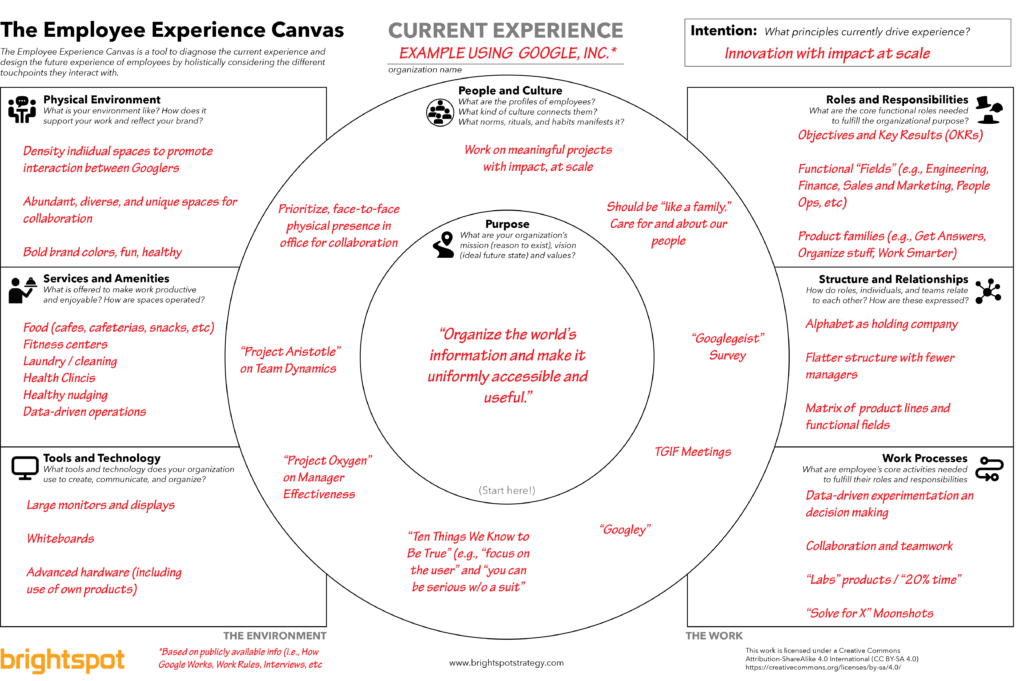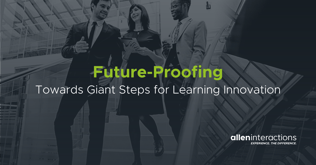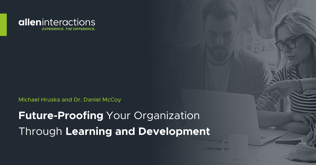
.png?width=1387&height=526&name=2023%20Blog%20Covers%20and%20In-Line%20Graphics%20(5).png)
How to Use Empathy to Ignite Innovation in Design Thinking
By Michael Hruska | January 17, 2023 | Strategic Consulting | 0 Comments
As learning and development (L&D) professionals, we all work to bring solutions to organizations and people. While we need to design and build things that are good for the organization, we also need to build things that people value and enjoy. This sounds easy, but the challenges of time, budget, fuzzy needs, shifting priorities, and resistance to change are well known. The Design Thinking approach offers a possible solution.
How do we really do design?
Typically, when approaching the challenge of designing learning and performance solutions, we employ a range of tools and techniques. These include up-front analysis and storyboards, as well as instructional design models like ADDIE and SAM. Ultimately, we discuss, design, and deliver a solution.
But, according to the 2017 LinkedIn Workplace Learning Report, only 8 percent of CEOs see business impact from L&D programs and even fewer (4 percent) actually see the return on investment (ROI). However, 90 percent of those CEOs view closing the skills gap in their organizations as the number one impact they desire for the business.
This gap in perception is an important one for all of us to consider, especially in light of the hard work put in by L&D professionals on a daily basis. How can we design things that help move the needle for behaviors that impact the business itself?
If all of the hard work we are doing in L&D isn’t getting the impact we need for our organizations, then maybe we should take a deeper look at how we are doing it—and look for new models for what we do.
Enter Design Thinking
Design Thinking is a set of tools and methods for creative problem-solving. Design Thinking focuses on empathy by adopting the mindset of the people you are serving. Overall, Design Thinking includes a set of key phases that describe the approach. They are empathy, definition, ideation, prototyping, and testing.
By using Design Thinking in L&D, we can better understand the problem and identify outcomes. We can also have a more concise idea of what would be truly impactful for the end users and for our organizations.
Design Thinking emphasizes the balance of feasibility, desirability, and viability of a solution for the business and for learners. It allows for the rapid exploration of solutions that ultimately hit the desired outcome.
Above: A Venn diagram shows the intersection of feasibility, desirability, and viability of solutions
Finding the intersection of the three elements in the Venn diagram should be the goal of any design project. Being deliberate about this balance will provide an approach for L&D teams to be able to drive solutions consistently and with value, both internally and across the organization.
Given the gap in expectations and outcomes from L&D, we should be open to new possibilities. If we are looking for better outcomes and believe there is a better way to impact our organizations, we should take a closer look at Design Thinking.
As L&D professionals, we are uniquely positioned to bring Design Thinking not only into our learning departments but our organizations overall. We can start by using Design Thinking to enhance our craft. We can then help our organizations adopt Design Thinking and create the capacity to adapt to the changing world more quickly. This approach could allow L&D to be a spark that drives a cultural shift to improve an organization.
How we can use Design Thinking in our organizations
Design Thinking uses a variety of tools, templates, and “canvases.” These include visioning exercises, personas, and empathy maps. The Design Thinking for Educators Toolkit aims to contextualize Design Thinking tools for K-12 educators, but some of the approaches, tools, and worksheets in this toolkit are valuable for educators at all levels.
Out of the box, many generalized Design Thinking tools could help your L&D team explore and design better solutions. You may need to tweak some tools for your specific needs. Some examples of how Design Thinking tools could help with strategic and “hard problems” are:
Analyzing and designing learning ecosystems: Understanding the concept of the learning ecosystem is one challenge; modeling it is another! I’ve taken the business model canvas and adapted it into a “Learning Ecosystem Canvas.” This free tool allows you to capture a model of your current learning ecosystem—and to dream and define your future learning ecosystem. This is a great tool to use to “lasso the dragon” of your potential learning ecosystem. It’s effective for organizations of any size and is open source, like many Design Thinking tools.Above: The Learning Ecosystem Canvas
People use this tool to understand and solve complex challenges related to large and small learning organizations. One organization with nearly 40,000 employees recently shared their story: They used the Learning Ecosystem Canvas to understand and align the needs of eight separate internal learning groups and explore how they might create better business impact. They collected over 1,700 data points to visualize the needs and collectively think about how they align people, processes, experience, measurement, and analytics with technology and business strategy to create impact.
- Understanding the people we serve: If we want to empathize with our users, the empathy map is a great tool. Use it to collect assumptions and actual data about what end users are thinking, saying, seeing, feeling, and doing. The Empathy Map Canvas (above) provides a visual framework to explore where your learners are. Read more and explore additional tools and techniques at the Gamestorming website, where you can also download the empathy map template, or in the Gamestorming book.
Above: An empathy map allows you to collect assumptions and data about your learners (Source: Brightspot Strategy)
- Understanding the employee experience: Digging deeper into the current experience of employees is critical if we want to produce solutions that meet them where they are. The free “Employee Experience Canvas” from Brightspot Strategy is a great tool to dig deeper into the “now” and get a grounded and holistic understanding of the complete environment that you are trying to impact. It could include sections to explore the physical work environment, roles and responsibilities, processes, tools, and more.

Above: Brightspot Strategy’s Employee Experience Canvas makes it easy to evaluate LX
- Designing learning experiences: One tool that would be immediately useful to any L&D team is a Learning Experience Canvas, available for free download. It provides a single canvas for capturing and iterating on the design of a learning experience. It’s a great place to get started with something that you already know well. Most importantly, whether you are using ADDIE or SAM (or your own mix of design approaches), you can use this canvas to bolster your approach to design in a simple manner.
What L&D can do with Design Thinking
A well-worn adage reminds us that we can’t use the same thinking to solve a problem that we used to create it. If we want different results, we need to do things differently—and that means we need to think differently.
Design Thinking gives us just that opportunity. We can use it to change our thinking and our doing. We have the opportunity as L&D professionals to transform our companies from the inside out to meet the ever-accelerating pace of change in the world. Most importantly, as you work these tools and many more into practice in your organization, you can help to unlock the true power and potential of people at your organization. Design Thinking isn’t only something that can change your L&D team, how you work, and what you make. It can actually transform the way your organization thinks and works.

About the Author: Michael Hruska
Michael Hruska is a technologist and design thinking (DT) practitioner with experiences spanning across standards, emerging technologies, learning, and science. He is a former researcher at the National Institute of Standards and Technology (NIST). Mike provides technology, business model and innovation solutions to Fortune 500, government and startup companiess. He researches, strategizes, designs, and makes advanced technology solutions and products. His team has built award winning products and delivered solutions that support millions of users and billions of hits of daily web traffic. Michael’s experience spans the continuum between advanced research on adaptive learning ecosystems and emerging technology solution/product design in a variety of industries.
Comments
Would you like to leave a comment?
Related Blog Posts
.png?width=316&name=2023%20Blog%20Covers%20and%20In-Line%20Graphics%20(9).png)
By: Michael Hruska | Feb, 2023
Category: Custom Learning, Strategic Consulting

By: Michael Hruska | Apr, 2020
Category: Custom Learning, Strategic Consulting

By: Michael Hruska | Apr, 2020
Category: Custom Learning, Strategic Consulting
